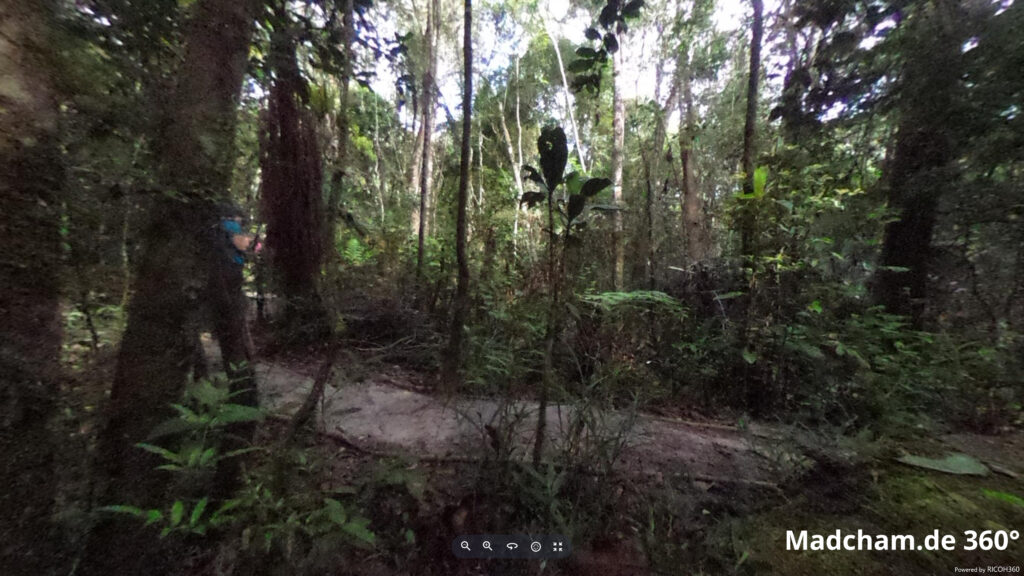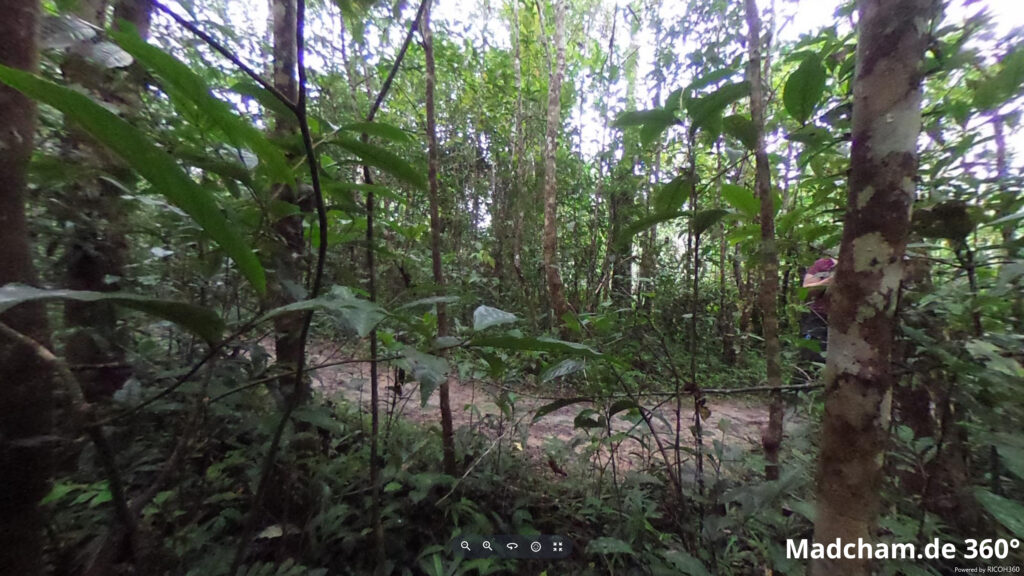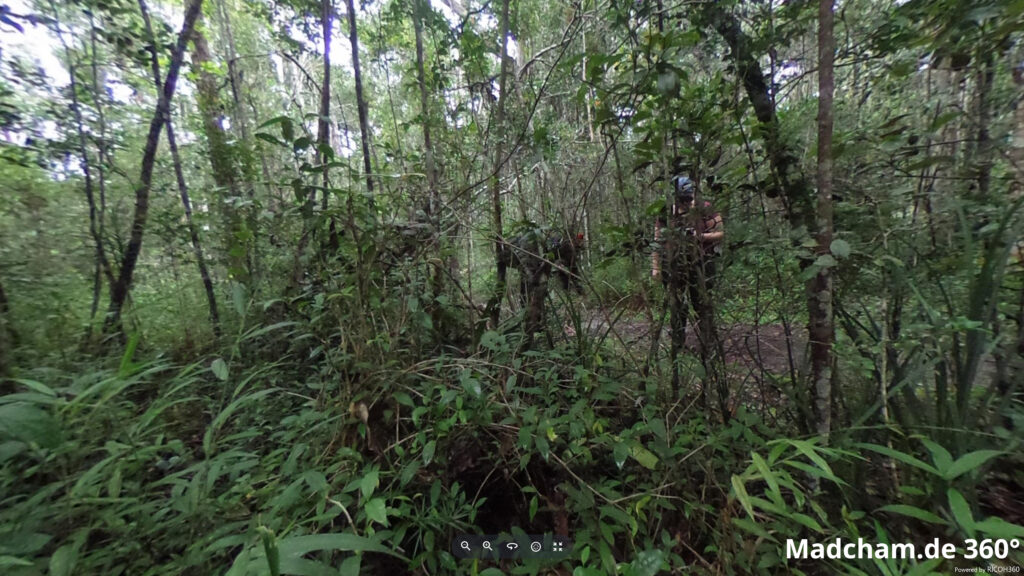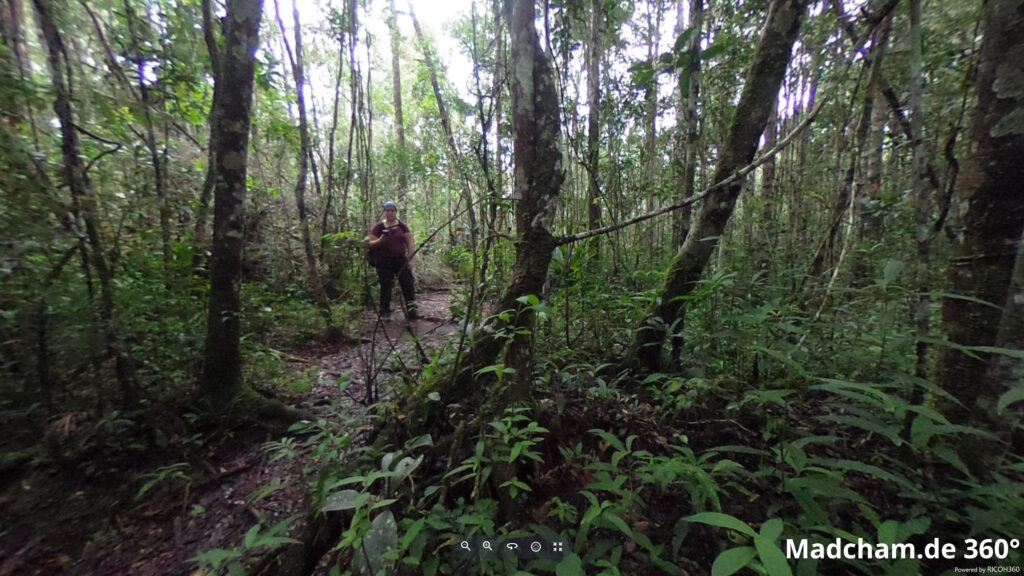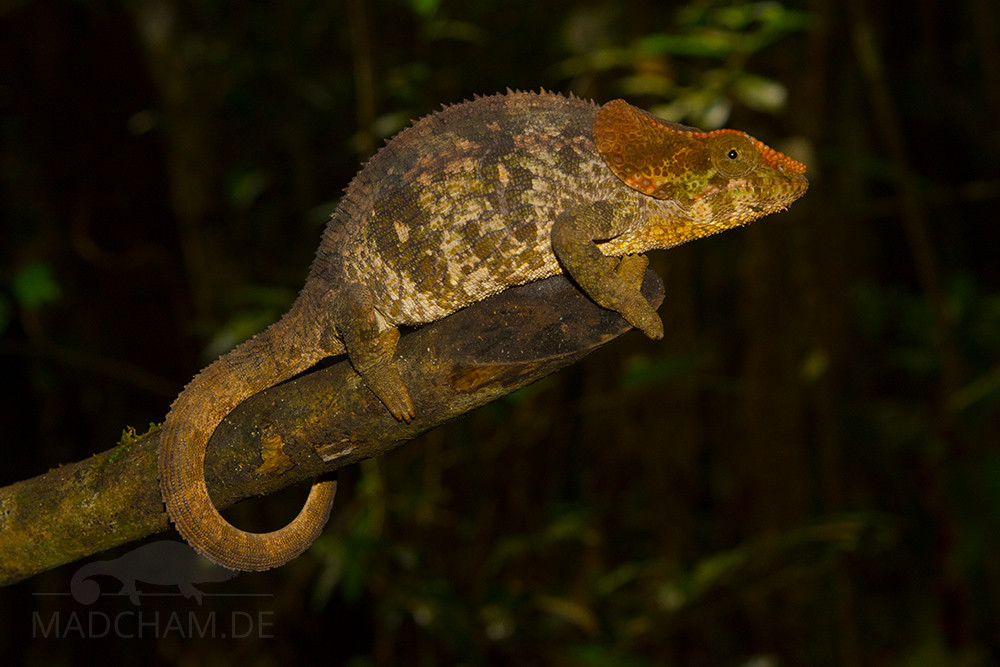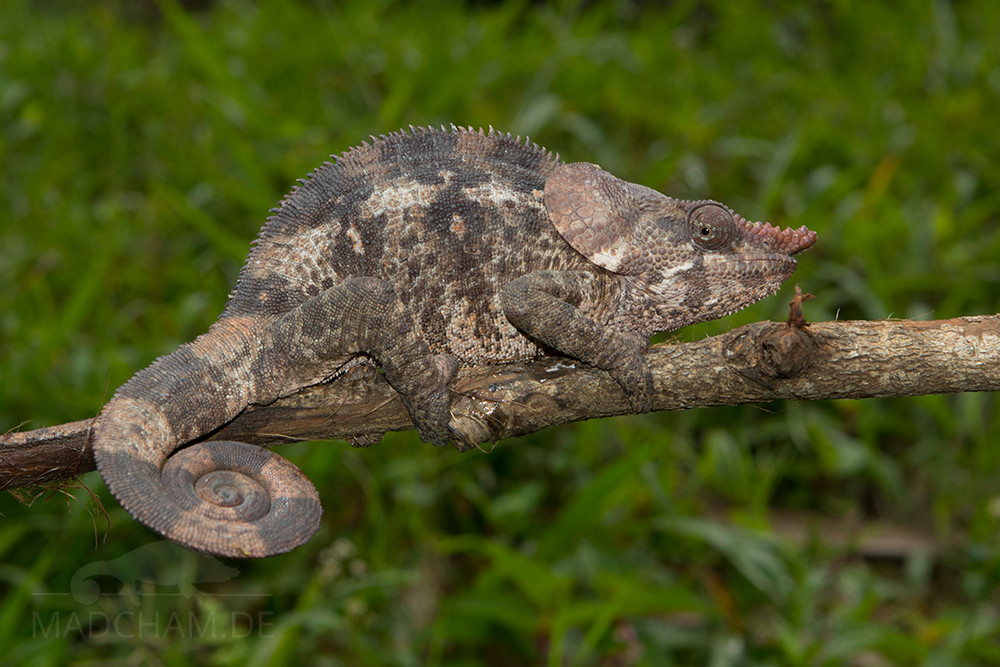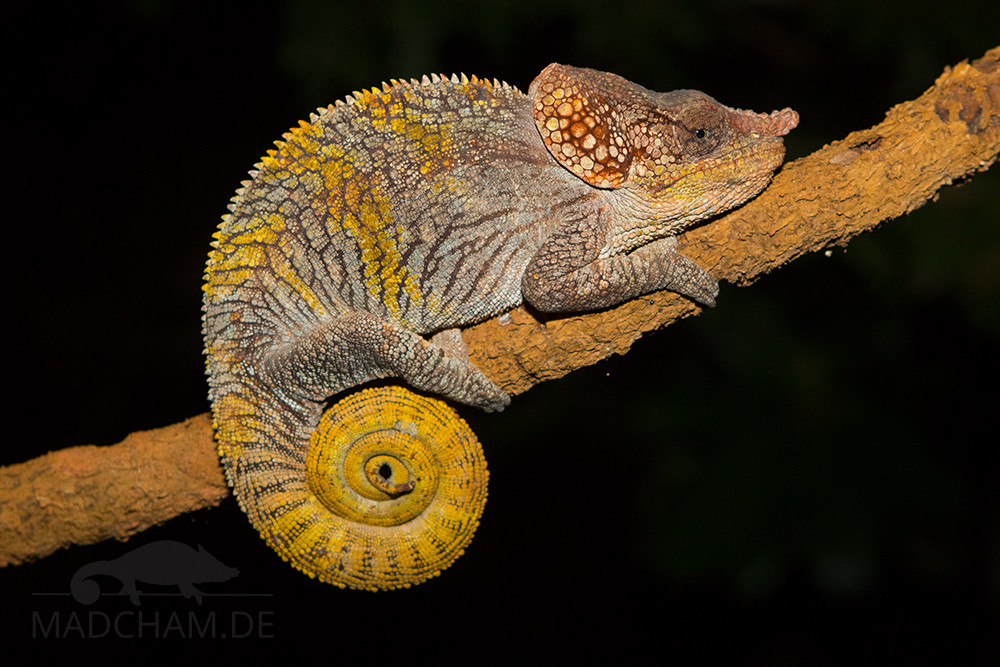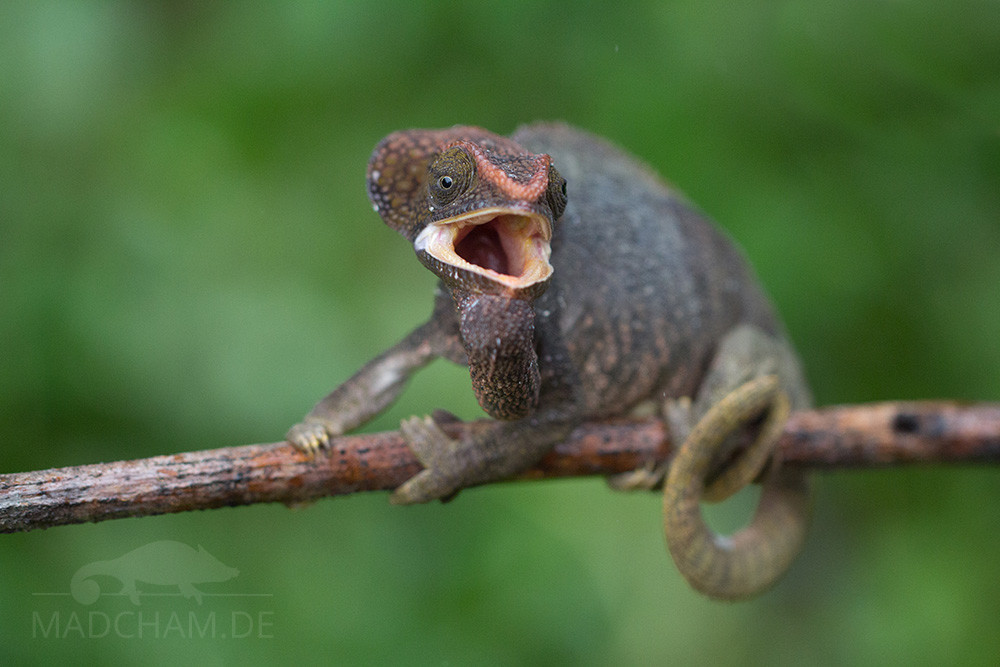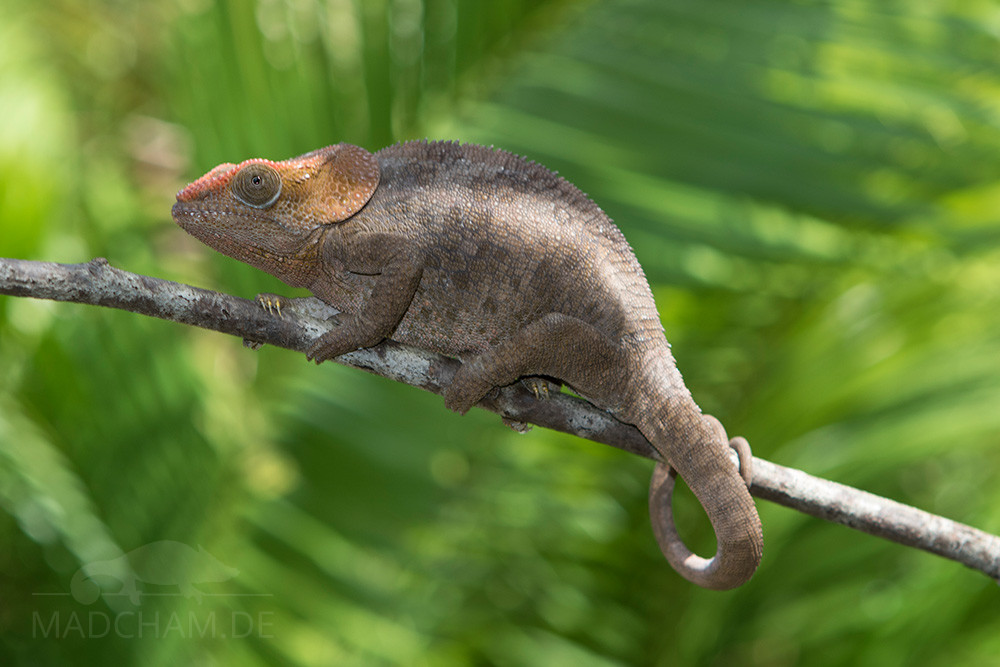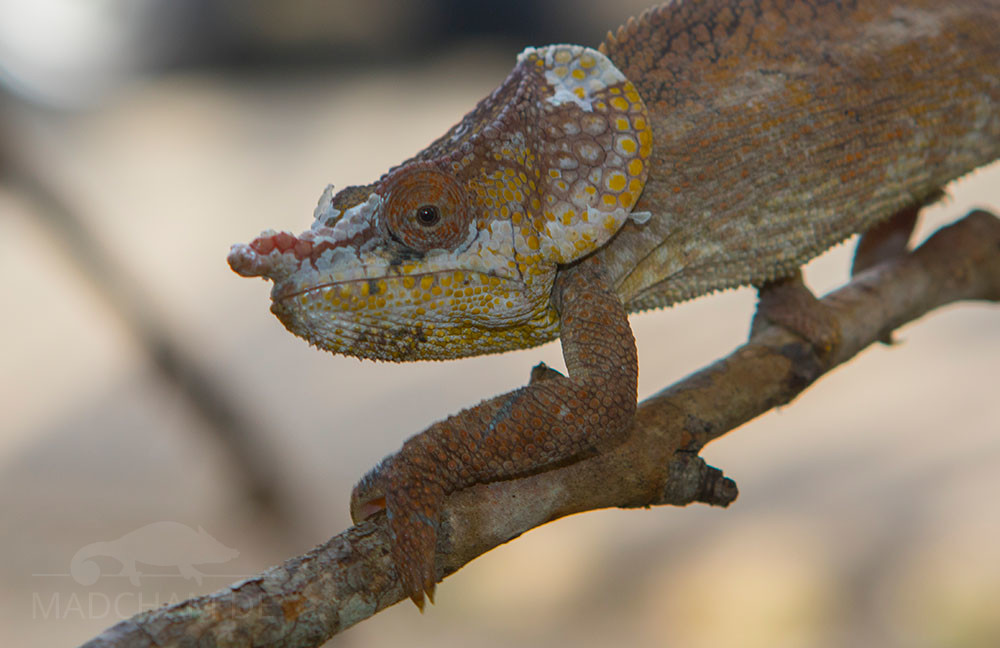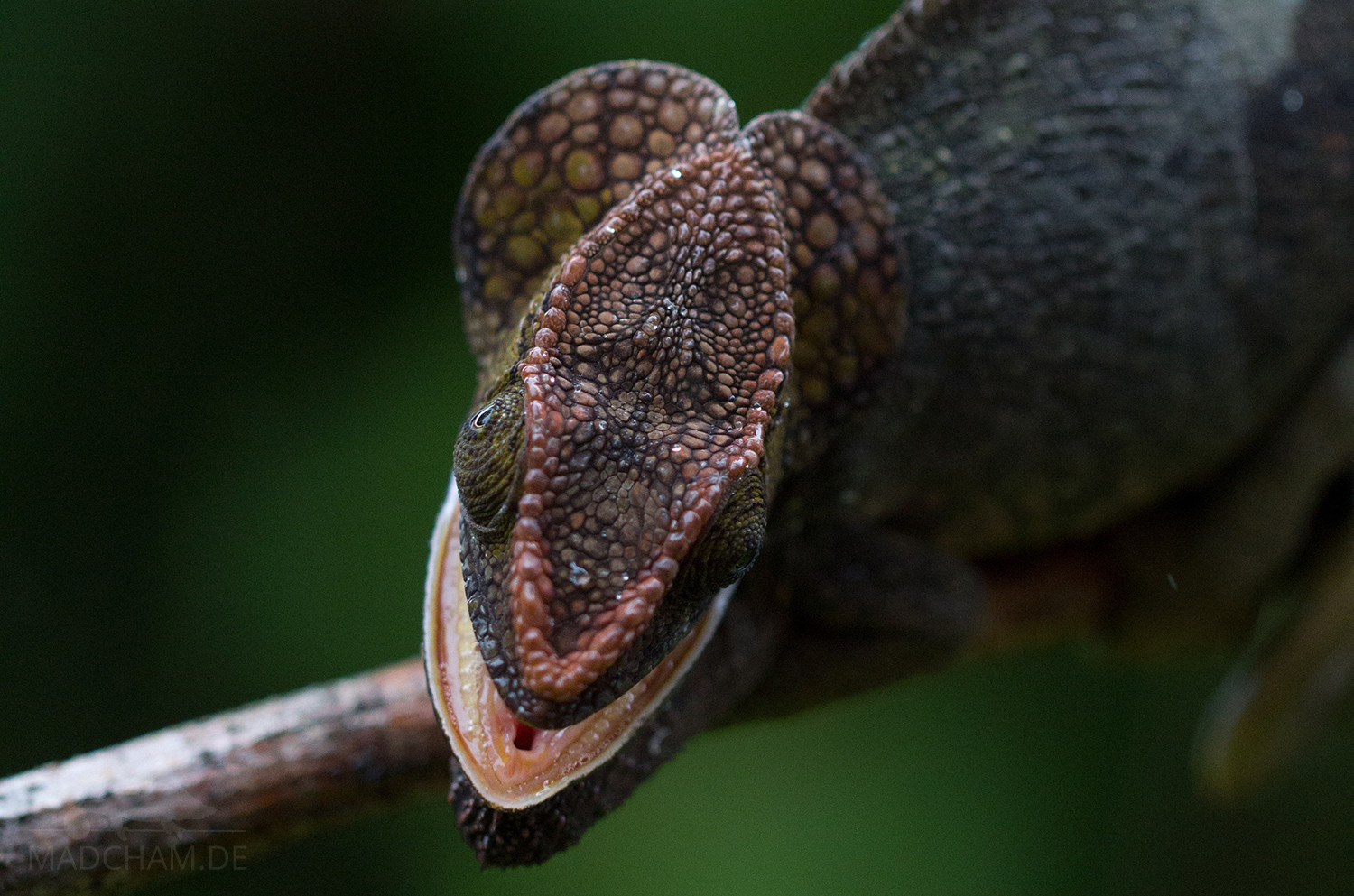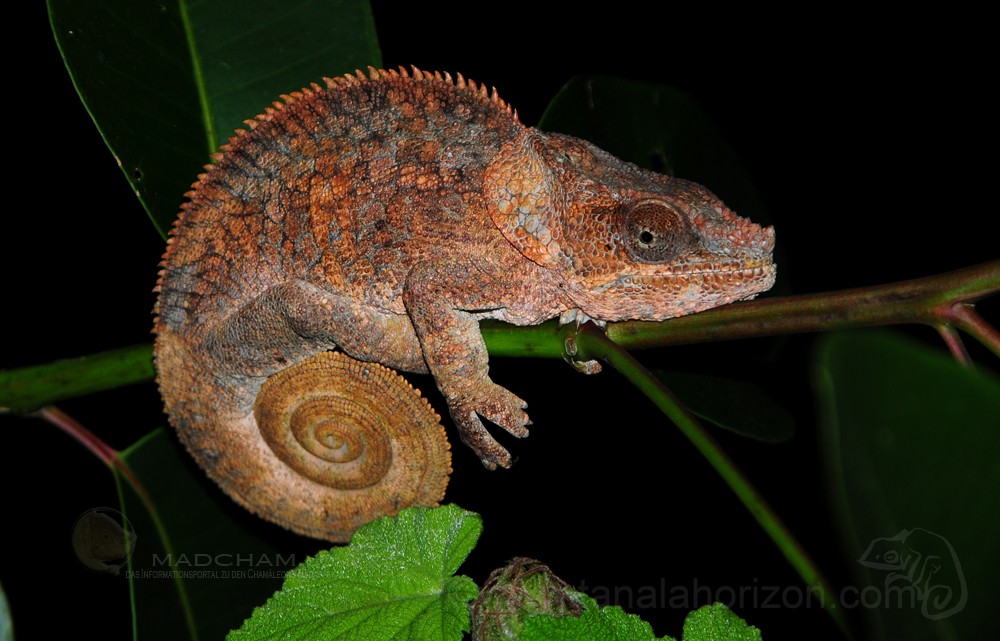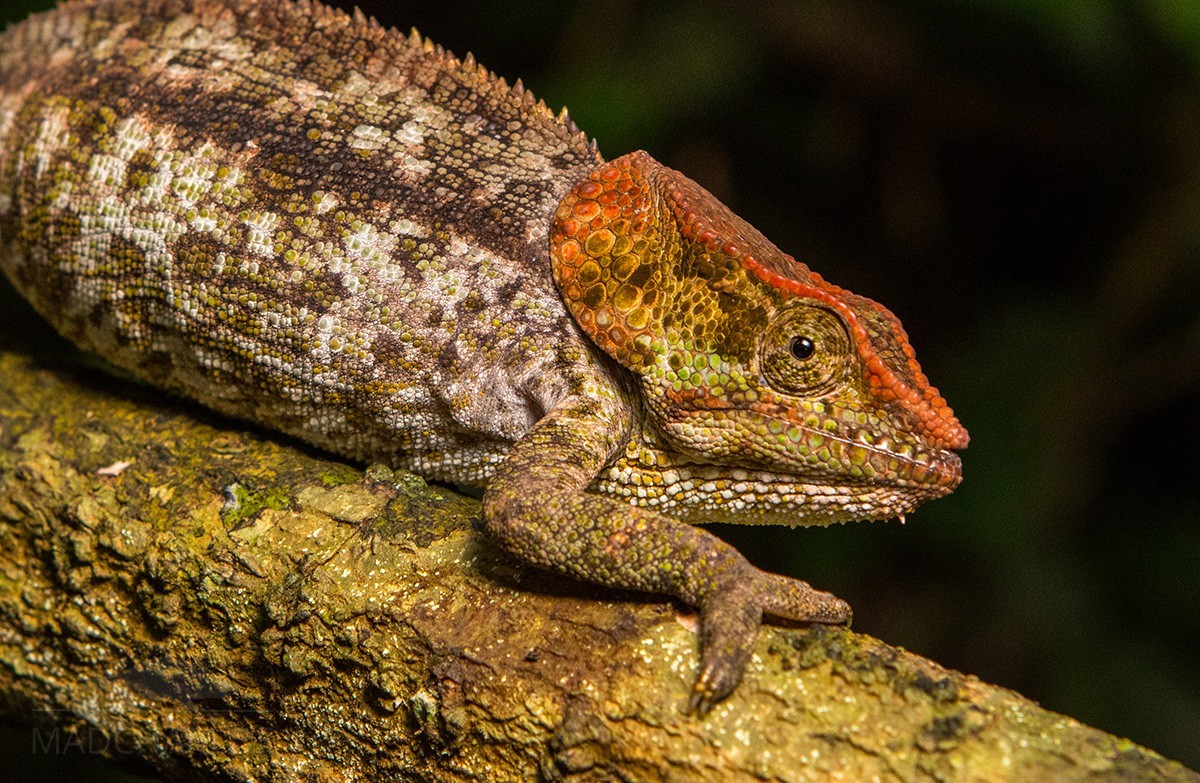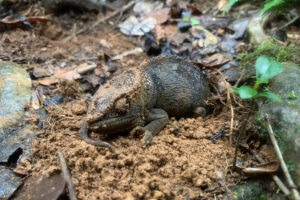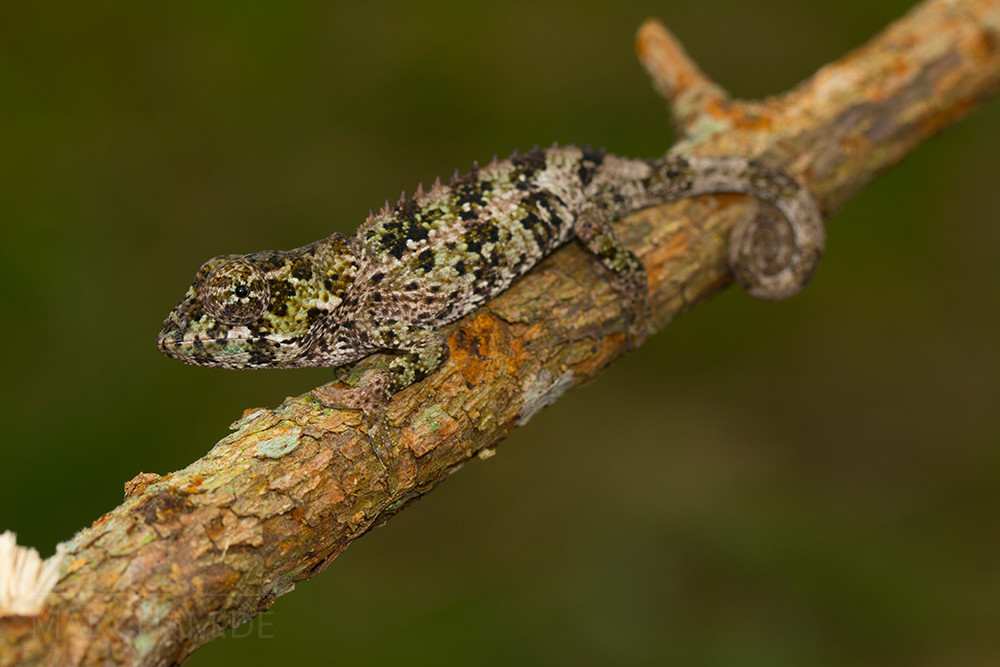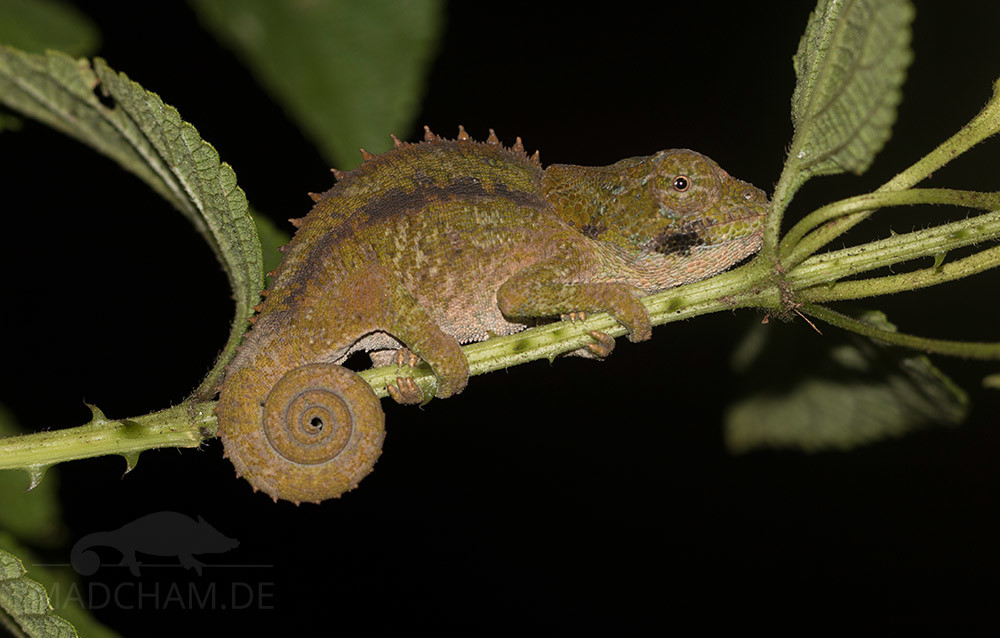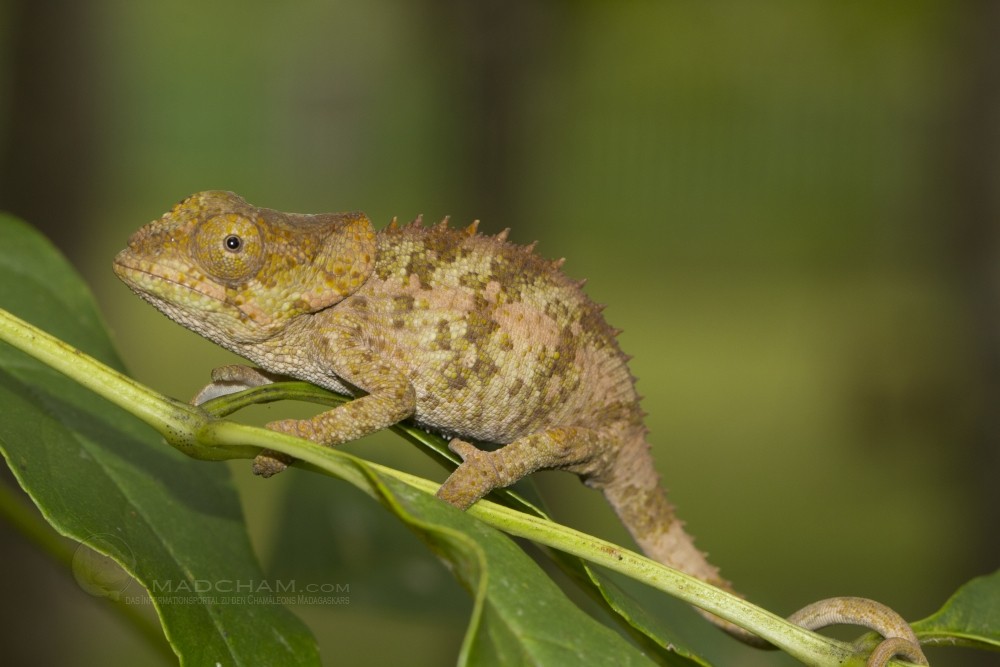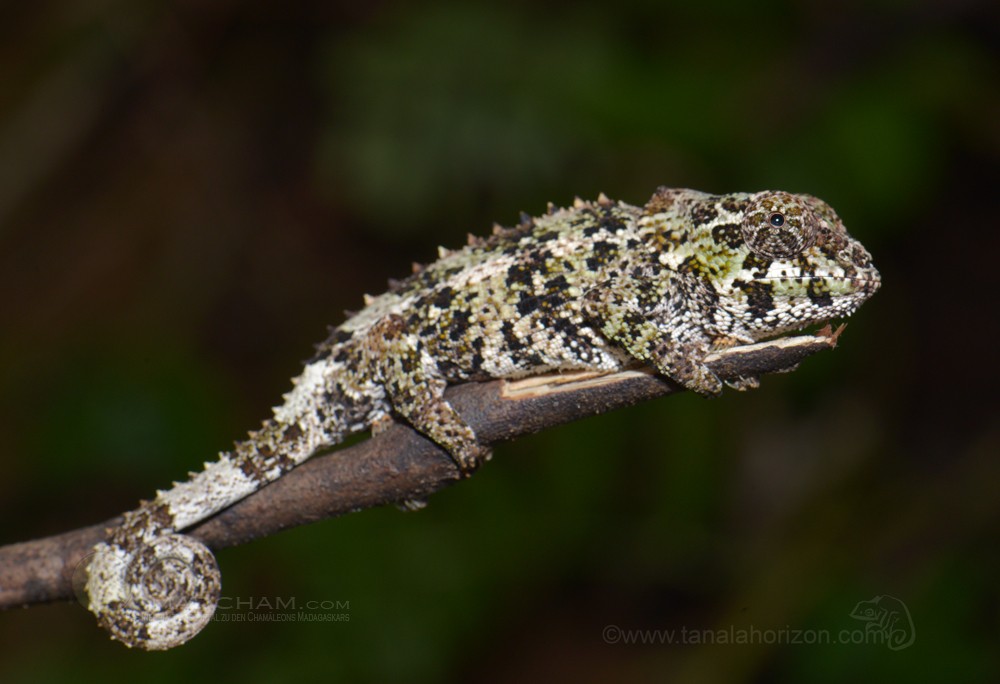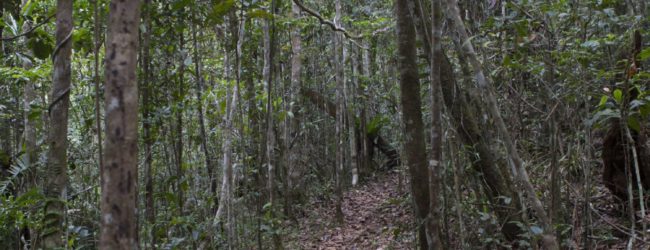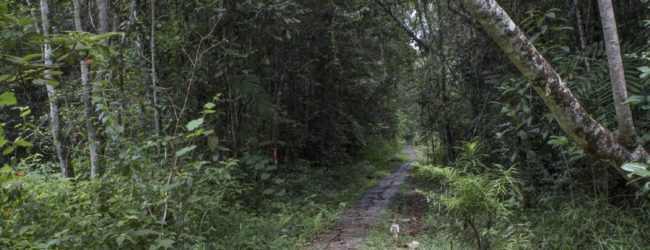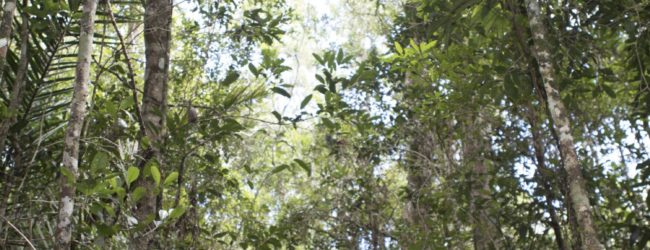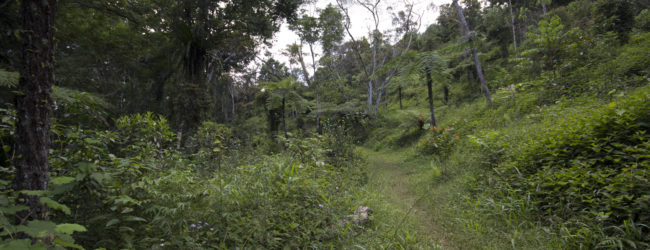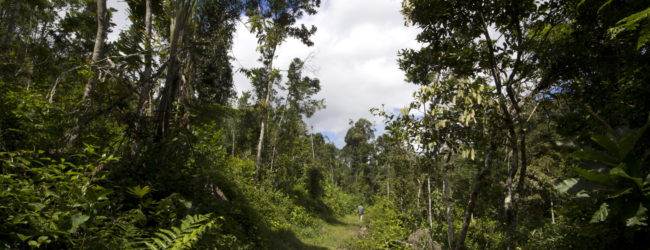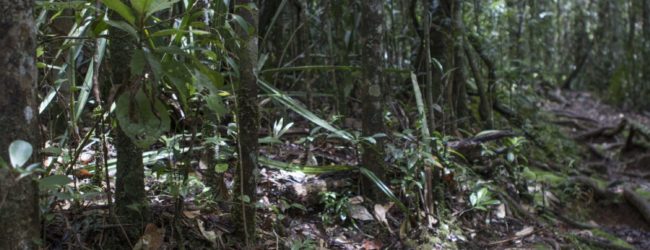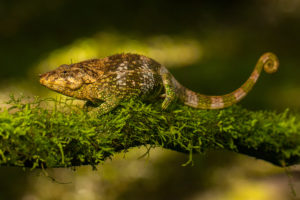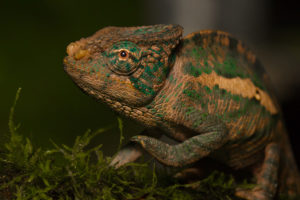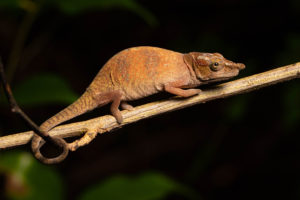2014-19 per year 500 animals released for legal export,
in 2020 the quota was set to 0,
2021-24 again 500 animals released for legal export
First description:
Origin of the species name:
The German zoologist Albert Carl Ludwig Gotthilf Günther, then director of the Zoological Department of the Natural History Museum of London (Great Britain), borrowed the name of this chameleon species from Latin. Brevis cornu, which means “shorthorn” in English, referred to the nose process of the female, which is actually short in comparison with the species Calumma malthe described at the same time. Günther erroneously described the males of Calumma brevicorne – with the longer noses – as a separate species, which he revised already three years later.
Distribution:
You can find Calumma brevicorne with high probability in Analamazaotra, part of Andasibe-Mantadia national park. These chameleons are quite common there, and you can find them without any problems during night walks along the streets sleeping on branches. And even during the day, you will find some at the edge of the road. Young individuals are easy to find in spring directly in front of the Analamazaotra park office in shrubs and low bushes. The habitat of Calumma brevicorne mainly consists of the primary rainforest with very high trees and much undergrowth. They are much less common in open terrain or close to villages.
Appearance and size:
Calumma brevicorne belongs to the larger chameleon species. With a total length of 40 cm, males are larger than females with only 28 cm. This chameleon species has occipital lobes that they can use to threaten another individual – they look like elephant ears then. This display behavior including an inflated gular sac is especially used before matings and in fights between chameleons but is also used to impress intrusive humans. Males of this species are mainly grey-brown colored, partially with pinkish accents on the nose appendage, while females have a shorter nose appendages and yellow accents around the eyes, on the casque and on the occipital loves. Yellow coloration is sometimes also seen in males, and males may also have brown areas on the occipital loves. Young animals are variously colored, from bright yellow to dark brown there is everything in between. The dorsal ridge has variously sized spines, that are especially distinct in babies. The following pictures show very young offspring in Amber Mountain.
Gewichtstabelle
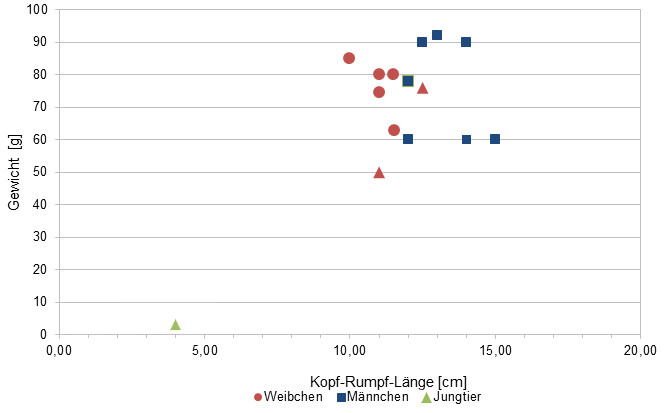
Gewicht = weight in grams, Kopf-Rumpf-Länge = snout-vent-length in cm
Since 2015, we measure the weights of most chameleons that we find in Madagascar, of course only if practicable with calm animals (and working scales). Up to date, we have only a few weights. Over the long term, we want to get an average weight in proportion to the snout-vent-length (measured from the tip of the nose to the cloaca) from a large number of measurements for each Madagascan chameleon species. It is important to know that weights were all measured at the end of the rainy season when the chameleons have been having the highest food supply of the year. So our table may show the maximum weights of chameleons in Madagascar. Triangular symbols in females mean not pregnant, spherical symbols mean pregnant.
| Jan | Feb | Mar | Apr | May | Jun | Jul | Aug | Sep | Oct | Nov | Dec | |
| Average temperature | 23 | 24 | 23 | 23 | 22 | 19 | 19 | 19 | 20 | 21 | 22 | 23 |
| Minimum temperature | 20 | 20 | 20 | 19 | 18 | 15 | 15 | 15 | 15 | 16 | 18 | 19 |
| Maximum temperature | 27 | 27 | 27 | 27 | 25 | 23 | 23 | 23 | 24 | 25 | 26 | 27 |
| Rain days | 27 | 24 | 26 | 19 | 17 | 18 | 21 | 20 | 15 | 16 | 20 | 25 |
We have collected the data given above over several years with thermometers and hygrometers at the finding places of the chameleons. "Average temperature" means that values of a whole month have been calculated to one average value per month. For example all measured minimum temperature values of February have been calculated to one average minimum temperature for February. In plain language, this means single peak values of a day may be a little higher or lower than the average minimum and maximum temperatures. It is possible that a location has an average maximum temperature of 29°C, but one day during that month it had 33°C or even 35°C there.
Three examples of a daily course of temperatures in Andasibe in the rainy season can be found below. Both were recorded with data loggers in 2023.
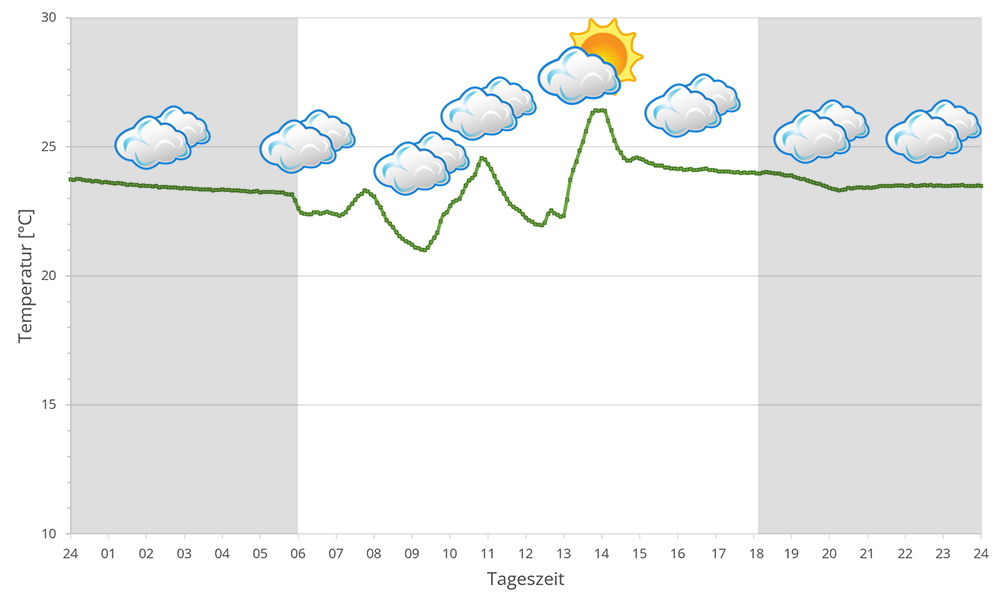
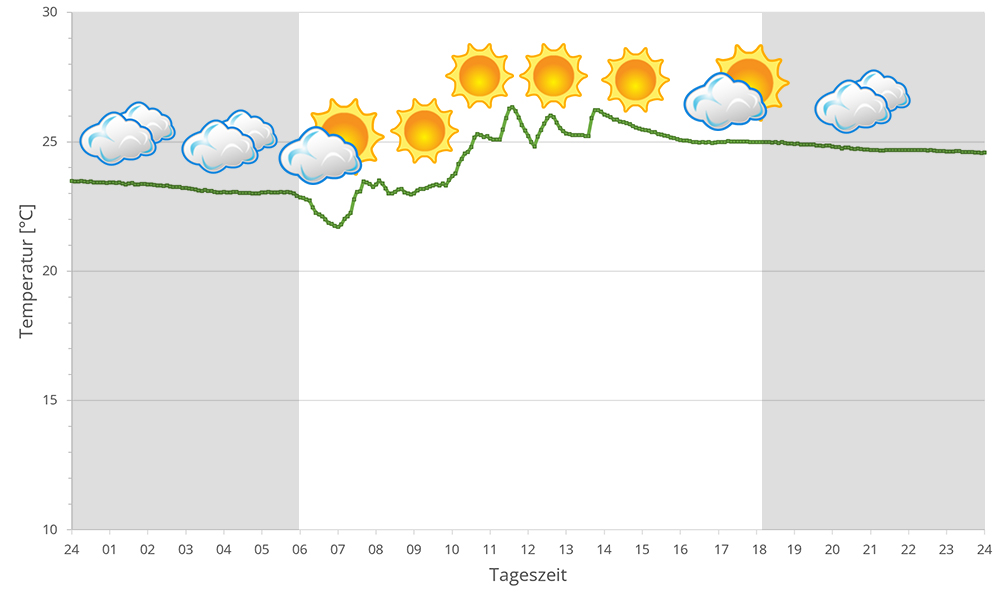
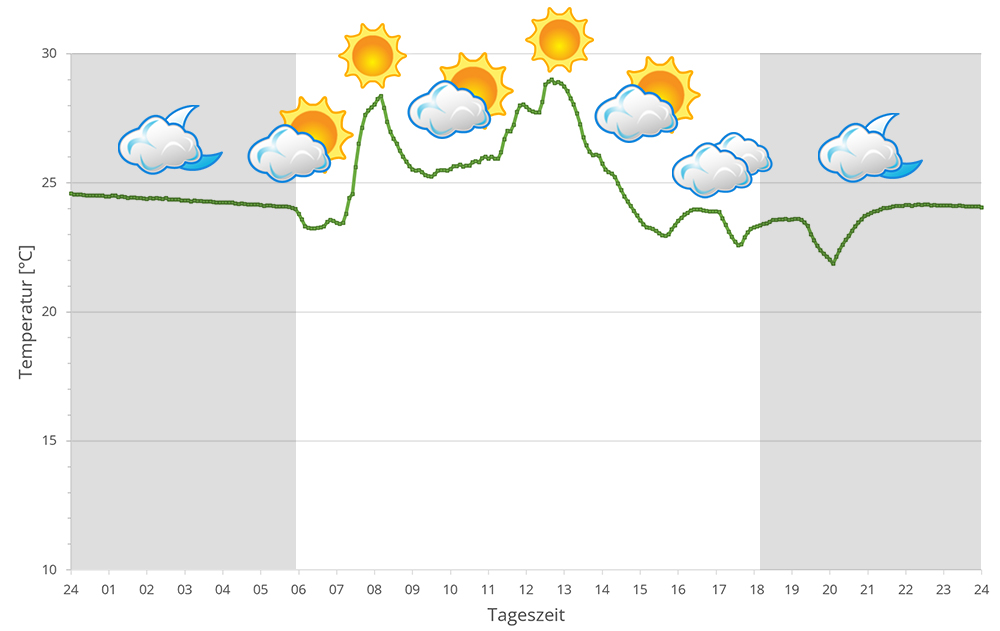
The region around Andasibe with the associated forests of Mantadia, Mitsinjo and Analamazaotra lie in the eastern highlands of Madagascar at altitudes between 900 and 1250 m above sea level. During the day, the temperature may sometimes exceed 25°C, but the thermometer rarely climbs above 30°C, or only in sunspots. At night, temperatures plummet, especially during the dry season. 10° to 15° degrees are the rule.
Humidity in the rainforests around Andasibe is high all year round. During the rainy season it rains extensively every day, sometimes the rain lasts for days. But the dry season is not massively different either, except that it has slightly cooler temperatures overall and reaches lower temperatures at night. It still rains at least every other day. Rain, high humidity and a drop in temperature at night are therefore the central points of Andasibe's climate. In 2023, we measured relative humidity with data loggers on different days in Andasibe in the rainy season, the data can be found below.
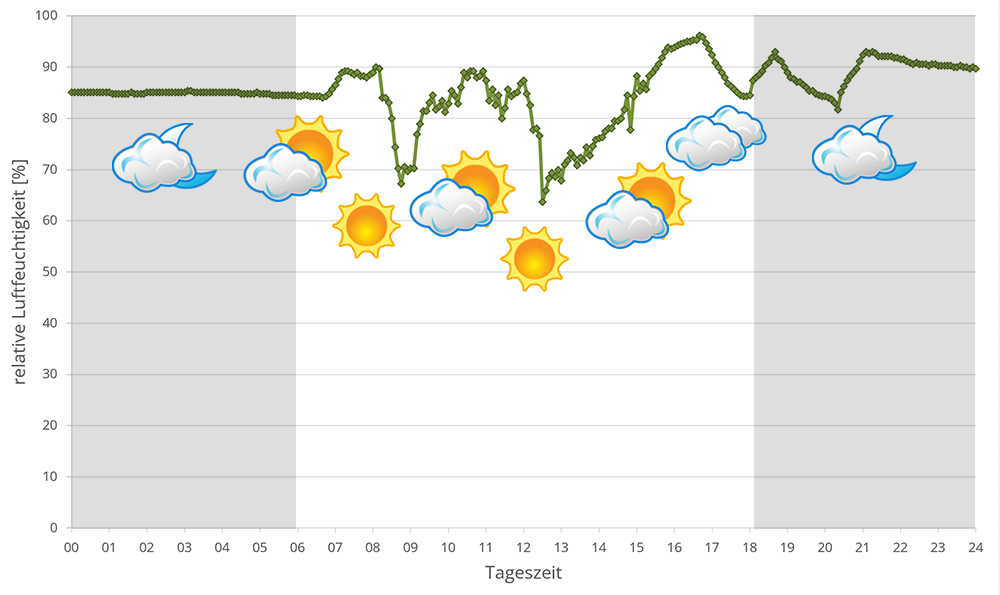
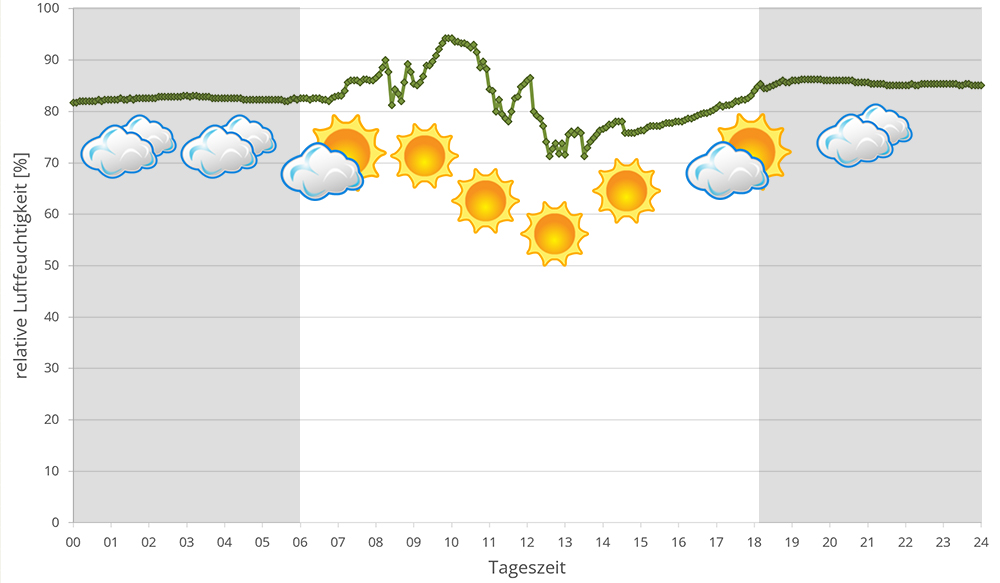
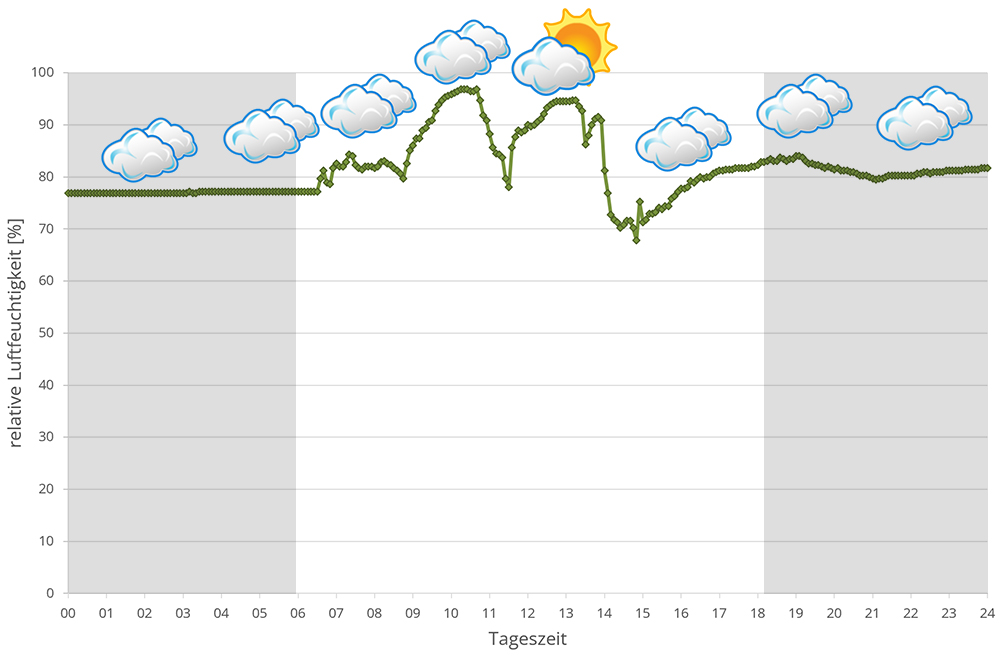
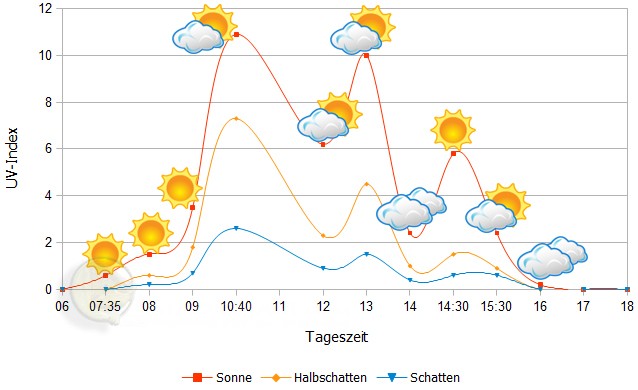
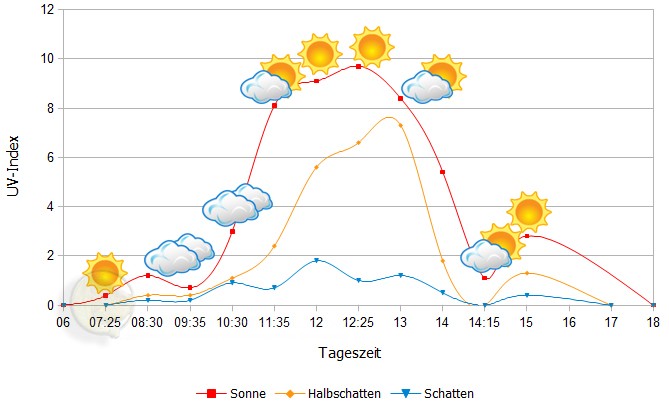 Tageszeit = day time, Sonne = sun, Halbschatten = half shade, Schatten = shade
Tageszeit = day time, Sonne = sun, Halbschatten = half shade, Schatten = shade
We have measured UVB data with a Solarmeter 6.5 in spring (March, April) at the peak of activity of chameleons in Madagascar. We always measured the values that a chameleon could maximally reach in its habitat.
| Jan | Feb | Mar | Apr | May | Jun | Jul | Aug | Sep | Oct | Nov | Dec | |
| Morning | 23,2 | 23,4 | 22,0 | 22,1 | 20,5 | 16,0 | 16,3 | 16,5 | 17,4 | 16,7 | 21,2 | - |
| Midday | 25,4 | 25,3 | 24,5 | 22,5 | 20,2 | 16,5 | 16,3 | 17,7 | 18,3 | 18,0 | 21,4 | - |
| Evening | 25,5 | 25,1 | 25,0 | 25,3 | 20,8 | 17,2 | 16,1 | 17,0 | 19,6 | 23,0 | 22,0 | - |
Between 21 March 2018 and 05 February 2019, we measured ground temperatures in the rainforest of Andasibe and surrounding areas (Analamazaotra, Andasibe, V.O.I.M.M.A. and Mitsinjo) about every other day - the table is the result of these measurements. Only in December no measurements were taken. detailed review can be found here. In total, we took 418 soil temperature measurements and measured an estimated 70 different locations in Andasibe and the surrounding area at a depth of 20 cm.
In 2023, in addition to other climate data, we also measured the air pressure at the locations we visited in Madagascar. The following data is from different days during the rainy season in Andasibe. On the X-axis is the time of day or night. In Madagascar, the day begins around 6 am, and night falls at 6 pm. The Y-axis shows the atmospheric pressure in hPa.
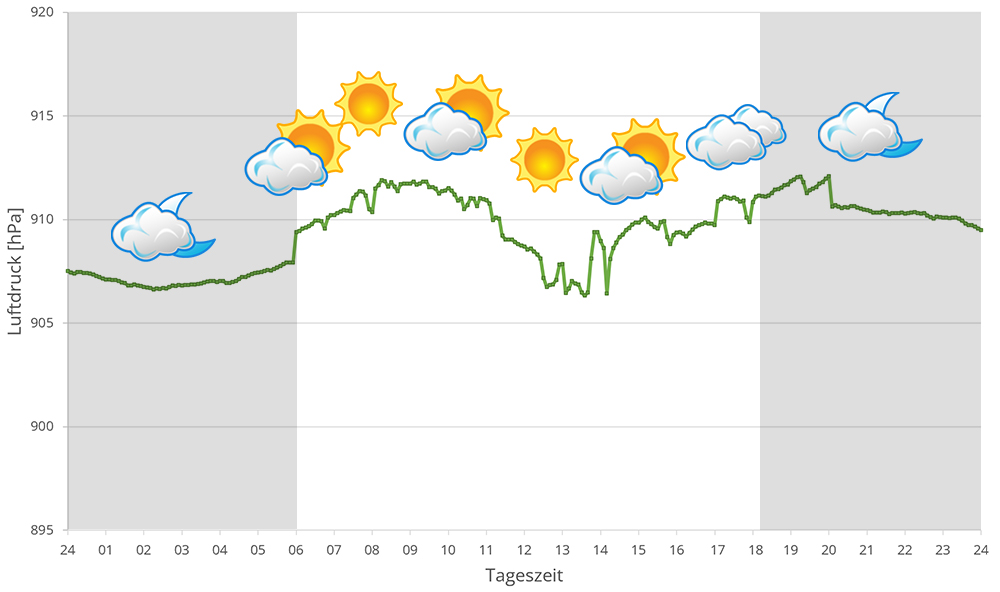
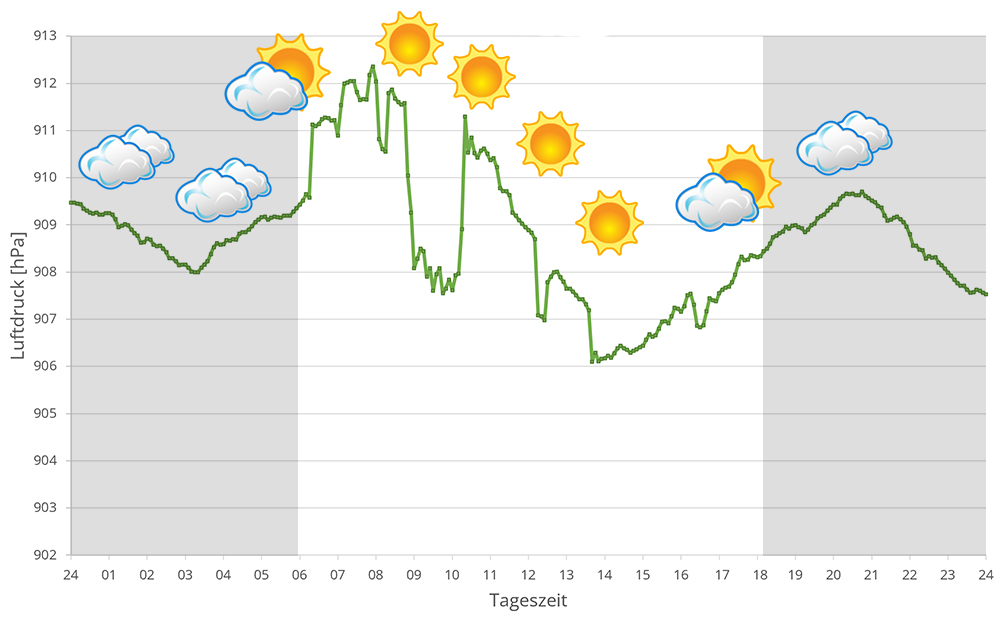
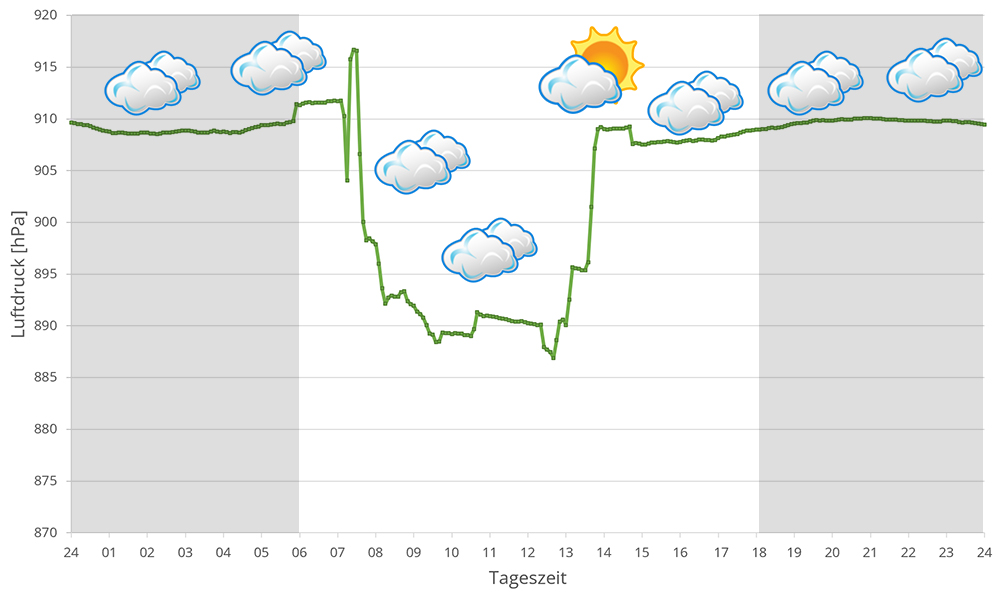
Habitat:
The following pictures show the habitat of Calumma brevicorne in the region around Andasibe. Some are even from finding places of this species. The rainforests of this area mainly consist of younger, slender trees. Calumma brevicorne does not only inhabit rainforest, but also secondary vegetation such as low tamarind trees with protruding crowns, small trees at the edge of the road or feral shrubs.
Below you will find some 360° images of rainforests in Andasibe region that we took during the rainy season. If you click on the respective image, the pictures will open in an enlarged view in a separate window. You can use the mouse to rotate in all directions. You also have the option of running the images in full-screen mode. Have fun looking at them!